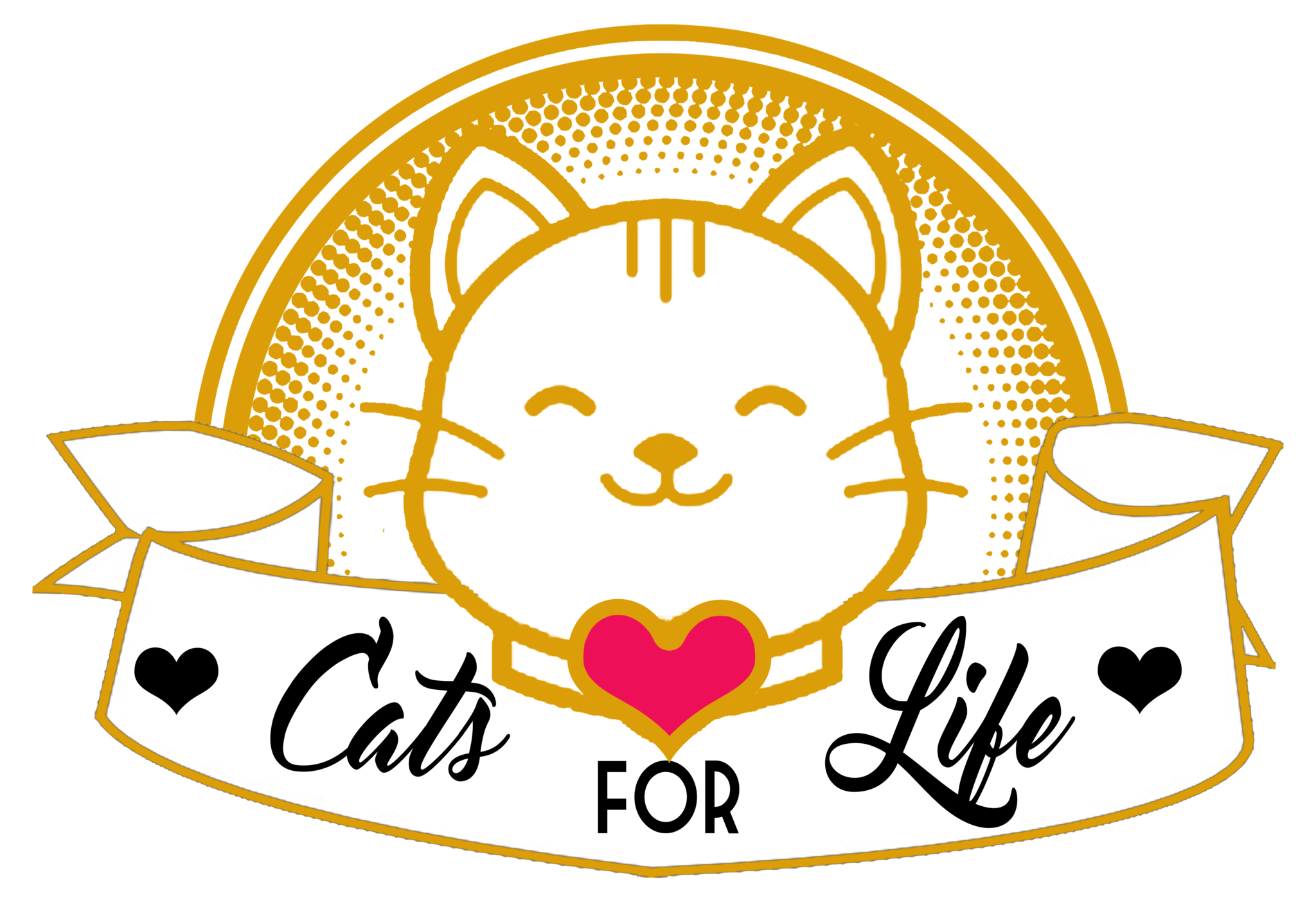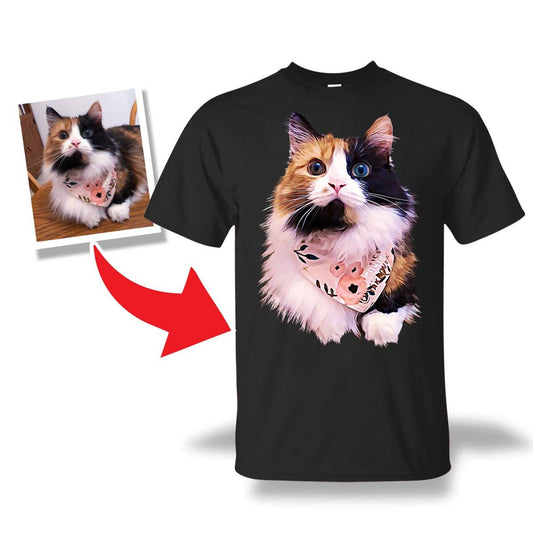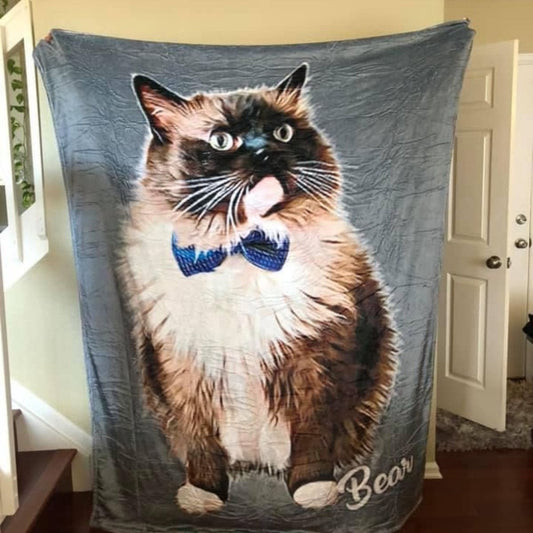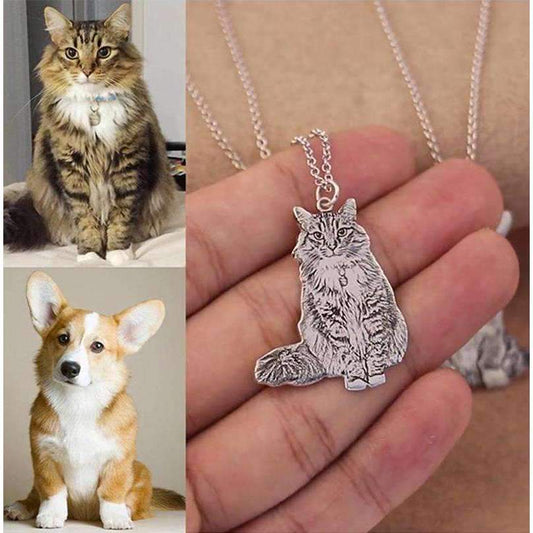Owning a cat is truly a one-of-a-kind experience. From their independent nature to their playful antics, cats have a way of capturing our hearts and becoming a part of our lives like no other pet. If you're a cat owner, you know exactly what I'm talking about. Whether it's the gentle purring in your ear early in the morning or the constant demand for attention, living with a feline companion comes with its own set of unique challenges and joys.
In this blog post, we will explore the world of cat ownership and delve into the aspects that every cat owner can relate to. From the initial decision to bring a cat into your home to the daily routines and care, we will uncover the shared experiences that bind us all as feline enthusiasts. So, whether you're a seasoned cat owner or considering welcoming a new whiskered friend into your life, get ready to nod your head in agreement and perhaps discover a few new insights along the way.
As we embark on this journey together, let's celebrate the joys, the quirks, and the undeniable love that comes with being a cat owner. So grab a cup of coffee, find a cozy spot, and prepare to reminisce and nod along as we share the unique moments that make every cat owner's life special.
The unspoken cat language and understanding each other's needs (2)
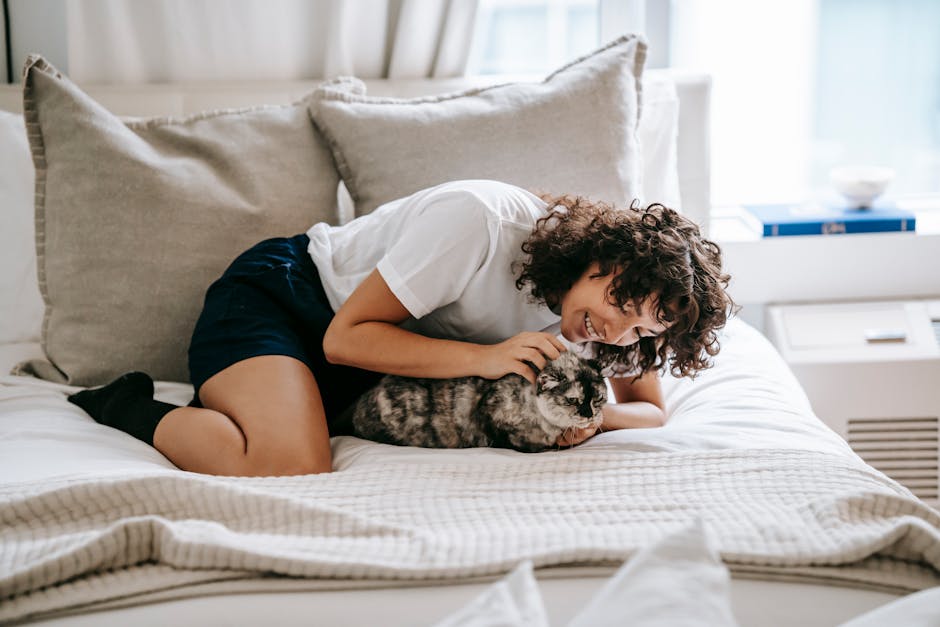
Did you know that cats have their own unique way of communicating with their owners? It's true - cats have an unspoken language that only those who truly understand them can decipher. As a cat owner, you have probably experienced those moments when your feline friend does something mysterious or behaves in an unusual way. Understanding this unspoken cat language is essential for building a strong and harmonious bond with your pet.
One important aspect of the unspoken cat language is their body language. Cats use various physical cues to express their feelings and needs. For example, when a cat rubs against your legs, it's not just a gesture of affection. It's their way of marking their territory and showing that you are a part of their family. Similarly, when a cat arches its back and hisses, it's a clear sign of aggression or fear.
Another crucial element of understanding cat language is through their vocalizations. Cats have a wide range of vocal expressions, each with its own meaning. A content and relaxed cat will often purr softly, expressing their satisfaction and happiness. On the other hand, a loud and persistent meow may indicate that your feline companion is seeking attention or is hungry.
Cats also communicate through their eyes. For instance, when a cat blinks slowly at you, it's a sign of trust and affection. It is commonly known as a "cat kiss" and is a way for your furry friend to show that they feel safe and comfortable in your presence. Conversely, dilated pupils and an intense stare may signify that the cat is feeling threatened or anxious.
Understanding the unspoken cat language goes beyond just decoding their physical and vocal cues. It also involves recognizing and respecting their individual needs. Just like humans, cats have their own unique personalities and preferences. Some cats might be more outgoing and seek constant attention, while others may prefer solitude and only approach you when they feel like it. It's important to observe and respect their boundaries, allowing them to feel secure and safe in their environment.
By taking the time to decode and understand your cat's unspoken language, you can strengthen the bond between you and your furry companion. It enables you to anticipate their needs, provide them with the appropriate care, and ensure their overall well-being. So next time your cat exhibits a mysterious behavior, remember that they are communicating with you in their own unique way, and it's up to you to decipher the unspoken language of these fascinating creatures.
The inevitable fur-covered clothing and furniture struggle (3)

Body: For all the cat owners out there, one struggle that seems to have no solution is the constant battle with fur-covered clothing and furniture. It's a challenge that transcends age, geography, and even breed of feline. No matter how diligent we are with grooming and brushing our furry companions, those pesky hairs have a way of infiltrating every nook and cranny of our homes and wardrobes.
It often feels like a losing battle. Just as we put on a fresh pair of pants, we notice a few stray hairs sticking to them. As we settle down on the couch to relax, we find ourselves engulfed in a cloud of fur. And despite our best efforts to keep our beds fur-free, it's not uncommon to wake up with a mouthful of cat hair. It's an everyday struggle that sometimes leaves us questioning why we ever decided to invite these furballs into our lives.
But amidst the frustration, there's a sense of camaraderie among cat owners. We console each other with stories of trying every lint roller on the market, experimenting with various vacuum cleaners, and even resorting to the old-fashioned method of tape-wrapping our hands to remove the clinging fur. We understand that this shared struggle is a small price to pay for the endless love and companionship our cats provide.
So, whether you're a seasoned cat owner or contemplating adopting your first feline friend, be prepared to accept that a fur-covered existence is part and parcel of the cat ownership experience. Embrace the occasional fashion faux-pas and consider the fur-covered furniture a testament to the bond you share with your feline companion. After all, a few strands of fur are a small sacrifice to make for the joy and companionship that cats bring into our lives.
The joy of watching a cat play and entertain themselves for hours (4)
One of the simple joys of owning a cat is observing their playful nature and their ability to entertain themselves for hours on end. It is fascinating to witness how a simple piece of string or a crumpled ball of paper can capture their attention and keep them engrossed in play for what feels like an eternity.
Watching a cat pounce, leap, and chase their toys is not only adorable but also therapeutic. It gives us a break from our busy lives and allows us to appreciate the pure simplicity of their enjoyment. As they gracefully maneuver through the room, it is impossible not to be mesmerized by their agility and grace.
Cats have an innate curiosity that drives them to explore every nook and cranny of their environment. They can find amusement in the smallest and most unexpected places, transforming everyday objects into their personal playground. Whether it's the sound of crinkling paper or the irresistible allure of a cardboard box, their imagination turns the mundane into an endless source of amusement.
It is during these playful moments that we get a glimpse into the wild hunter that lives within every domestic cat. As they stalk their pretend prey or engage in a friendly game of hide-and-seek, we are reminded of their primal instincts and their connection to their ancestors. It truly is a privilege to witness this behavior firsthand.
Aside from the pure joy it brings to watch our cat's playfulness, it also holds numerous benefits for our furry companions. Playtime is a crucial part of their physical and mental well-being. It helps them stay fit, maintain a healthy weight, and channel their energy in a positive way. Furthermore, engaging in interactive play with our cats helps strengthen the bond between us and provides them with the social stimulation they need.
In conclusion, the joy of watching a cat play and entertain themselves for hours is a delight that every cat owner can relate to. It is a reminder of the beauty in the simple things and the wonder that our feline friends bring into our lives.
The constant battle against shedding and the never-ending fur clean-up (5)
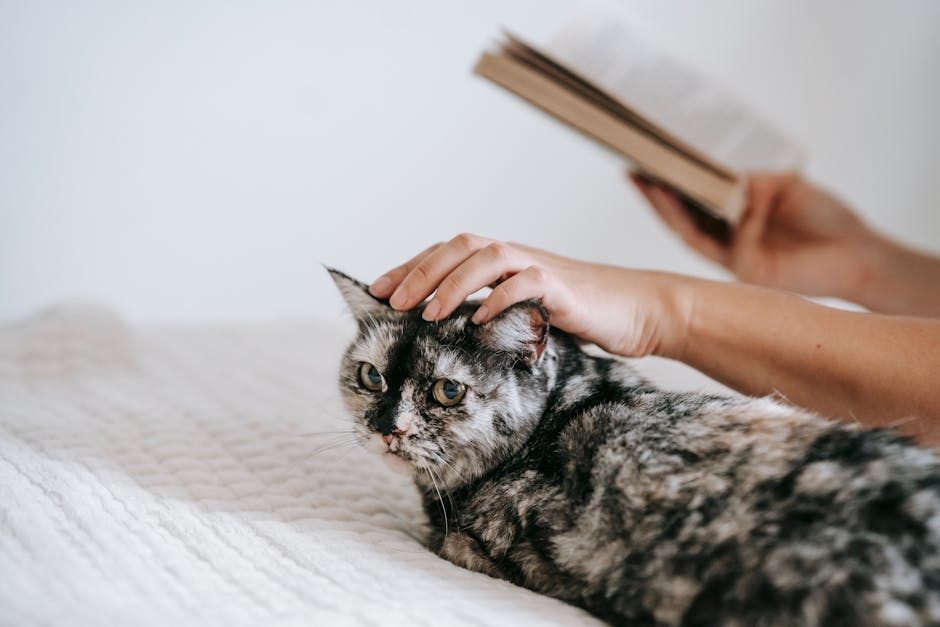
Do you own a cat? If yes, then you probably understand the struggle of dealing with shedding and the constant need for fur clean-up. It seems like no matter how much we brush our furry friends or clean up after them, there is always more fur to be found.
Shedding is a natural process for cats, especially during certain seasons or in response to stress. While it may be a sign of a healthy coat, it can create quite a mess in our homes. The challenge lies in finding effective ways to manage and minimize the amount of fur that ends up on our furniture, clothes, and all corners of our living space.
One of the first steps in tackling the fur clean-up battle is regular grooming. Brushing your cat daily helps to remove loose fur before it has a chance to be spread around your home. There are various brushes and grooming tools available, so it's important to find one that works best for your cat's coat type. Not only does this help prevent excessive shedding, but it also promotes a healthy coat and reduces the likelihood of hairballs.
Investing in high-quality furniture covers and throws can also be a game-changer. These protective items not only help safeguard your furniture from fur but also make clean-up a breeze. They can be easily removed, washed, and put back in place, ensuring that your living room remains fur-free even with a shedding cat.
Regular vacuuming and dusting are essential in combating the never-ending fur clean-up battle. Opting for a vacuum cleaner specifically designed to pick up pet hair will make the task much easier. Pay extra attention to areas where your cat spends the most time, such as their favorite sleeping spots or scratching posts. Additionally, using a damp cloth or a specialized pet hair removal tool can help pick up loose fur from surfaces that are harder to vacuum, such as curtains or upholstery.
Creating dedicated grooming stations or areas can help contain the shedding and minimize the fur spread. Place a comfortable mat or towel where your cat can be brushed, reducing the amount of fur that ends up on your floors or furniture. Regularly cleaning and washing this mat will prevent fur buildup and keep your home cleaner.
Finally, maintaining a clean environment is not only crucial for your sanity but also for your cat's well-being. Excessive fur can lead to hairballs, allergies, and respiratory issues. While shedding is a natural process, if you notice an excessive amount or any signs of skin irritation or bald spots on your cat, it's always best to consult with a veterinarian.
In conclusion, as cat owners, we are well aware of the constant battle against shedding and the never-ending fur clean-up. By implementing regular grooming routines, investing in protective furniture covers, and keeping a clean environment, we can minimize the impact of shedding and maintain a fur-free home. Remember, a little extra effort goes a long way in keeping you and your feline companion happy and comfortable.
The amusing antics and unexpected surprises cats bring into our lives (6)

From their playful pounces to their mischievous adventures, cats have a way of injecting amusement and delight into our lives. Whether you've grown up with feline companions or recently adopted a furry friend, there's no denying the amusing antics cats bring into our homes.
One minute, they're stealthily stalking their imaginary prey, only to be distracted by a flickering light or a dangling string. The next, they're leaping effortlessly onto high surfaces, displaying their acrobatic prowess that never ceases to amaze us. Their agile movements and lightning-fast reflexes make for an entertaining spectacle that can brighten even the dullest of days.
But it's not just their physical abilities that bring joy to our lives. Cats have an extraordinary ability to find amusement in the simplest of things. From chasing a laser pointer's elusive dot to batting at a crumpled ball of paper, their enthusiasm for mundane objects reminds us to find pleasure in the little things. It's hard to resist a smile when witnessing their unrestrained fascination and happiness in these moments.
Cats also have an uncanny knack for surprising us with their unexpected behaviors and discoveries. Whether it's stealthily sneaking into tightly closed cabinets or fearlessly exploring new territories, their curiosity knows no bounds. Those of us who have owned cats have undoubtedly experienced the surprise of finding our feline friends in the most unexpected places, leaving us both puzzled and amused.
Furthermore, their independence and ability to entertain themselves can create moments of amusement and surprise. From their hilarious attempts to squeeze into boxes way too small for their size, to their playful swipes at the air during an imaginary battle, cats have a unique way of keeping us entertained without any effort on our part.
While their amusing antics and unexpected surprises can sometimes result in minor inconveniences (such as knocked-over objects or unraveled toilet paper), the joy they bring far outweighs the occasional mishaps. Our lives are enriched by their presence, and the laughter and smiles they provide are truly priceless.
So, whether you're a long-time cat owner or contemplating becoming one, be prepared to embrace the amusing and unpredictable journey that comes with sharing your life with a feline companion. From their hilarious quirks to their uncanny ability to keep us on our toes, cats will continue to bring laughter and surprise into our lives, reminding us of the simple joys that can be found in the company of our beloved furry friends.
The struggle of trying to keep houseplants safe from curious cats (7)

As a cat owner, you know that our feline friends can bring endless joy and companionship into our lives. However, their playful nature can also present some challenges when it comes to keeping our homes both stylish and safe. One common struggle that every cat owner can relate to is the ongoing battle to keep our houseplants out of their curious paws.
It seems like no matter what steps we take to protect our plants, our furry friends always find a way to investigate, nibble, or knock them over. The lush green foliage that adds life and beauty to our living spaces becomes a tantalizing playground for our cats. This struggle is not only frustrating but can also be potentially dangerous for our beloved pets.
First and foremost, we need to be aware that certain houseplants can be toxic to cats if ingested. Plants like lilies, philodendrons, and azaleas are just a few examples of common household plants that can cause a range of symptoms from mild gastrointestinal upset to more severe reactions. To ensure the safety of our feline companions, it's crucial to research and avoid bringing any toxic plants into our homes.
Even with non-toxic plants, cats have a knack for knocking things over. A beautifully placed potted plant can quickly become a mess of soil and broken pottery in a matter of seconds, leaving us with the daunting task of picking up the pieces (literally). To combat this, we can try utilizing heavier planters or securing them to a sturdy surface to make them less prone to tipping over. Alternatively, placing plants in areas that are less accessible to cats, such as high shelves or hanging baskets, can also be effective.
Another strategy to protect our plants is to create an enjoyable and stimulating environment for our cats elsewhere in the house. Providing them with a variety of cat-friendly toys, scratching posts, and elevated perches not only keeps them entertained but also helps divert their attention away from the tempting allure of our houseplants. By offering alternative forms of entertainment and mental stimulation, we can decrease their interest in exploring and potentially damaging our beloved plants.
Additionally, we can consider placing deterrents around our plants to discourage our curious felines from getting too close. Some options include using natural repellents like citrus peels, vinegar, or coffee grounds, which cats typically find unappealing. For particularly persistent cats, placing aluminum foil or double-sided tape around the base of the plants can act as a physical barrier, deterring their curious paws.
In conclusion, the struggle to keep our houseplants safe from our curious cats is a common challenge for every cat owner. While we may never completely eliminate their curiosity, we can take steps to minimize the risks. By avoiding toxic plants, securing planters, providing alternative forms of entertainment, and utilizing deterrents, we can create a safer environment for our furry friends while still enjoying the beauty of indoor greenery.
The therapeutic effect of cuddling with a warm, purring kitty (8)
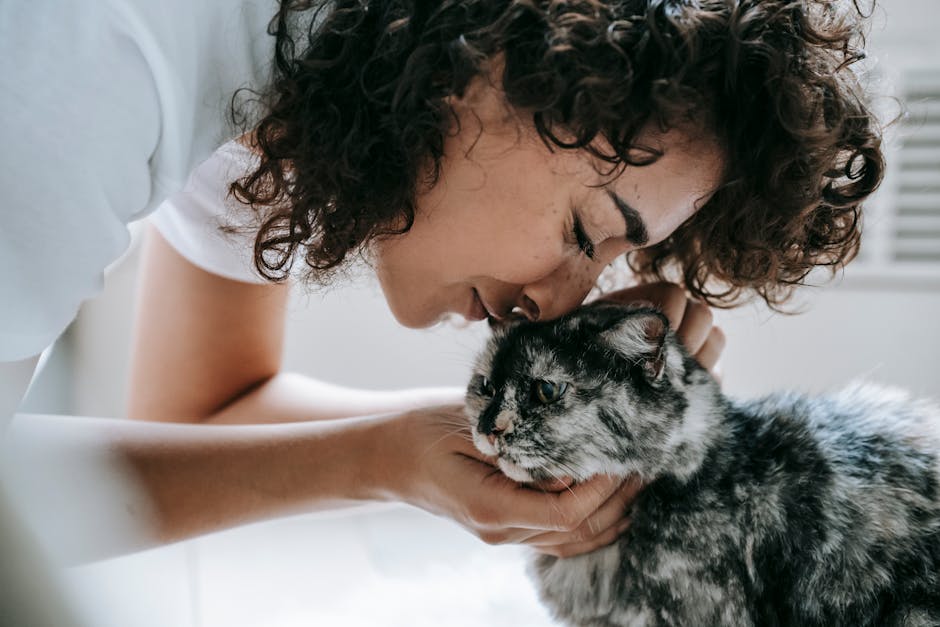
In the hustle and bustle of our professional lives, it's easy to overlook the importance of finding moments of calm and relaxation. But as any cat owner will tell you, the therapeutic effect of cuddling with a warm, purring kitty is something that cannot be underestimated.
There is a reason why cats have been revered throughout history for their ability to provide comfort. The simple act of snuggling up next to a cat and feeling the gentle vibrations of its purring can work wonders for reducing stress and promoting a sense of tranquility. It's almost like having your very own furry therapist on hand whenever you need it.
Scientifically, the act of petting a cat has been shown to release endorphins in the brain, which are natural pain and stress relievers. The rhythmic motion of stroking a cat's soft fur can help lower blood pressure and heart rate, bringing about a sense of calmness and relaxation. It's no wonder that many people turn to their feline companions as a form of therapy after a long, hectic day.
But the benefits of cuddling with a cat go beyond just the physical. Cats are known for their intuitive nature, and they have a unique ability to sense when their owners are feeling down or anxious. They have a way of providing emotional support that is truly remarkable. The warmth and unconditional love that radiates from a cat can make all the difference in the world when you are in need of a mental pick-me-up.
In a professional setting, where stress and deadlines can often take center stage, taking the time to unwind with a cuddly companion can be invaluable. It allows us to step back from the pressures of the day and be fully present in the moment, enjoying the simple pleasure of bonding with our furry friend.
So, the next time you find yourself in need of some relaxation and rejuvenation, don't underestimate the power of snuggling up with a warm, purring kitty. Embrace the therapeutic benefits that come with being a cat owner, and let your feline companion help you find your inner peace amidst the chaos of the business world.
The challenges and rewards of training a cat (9)
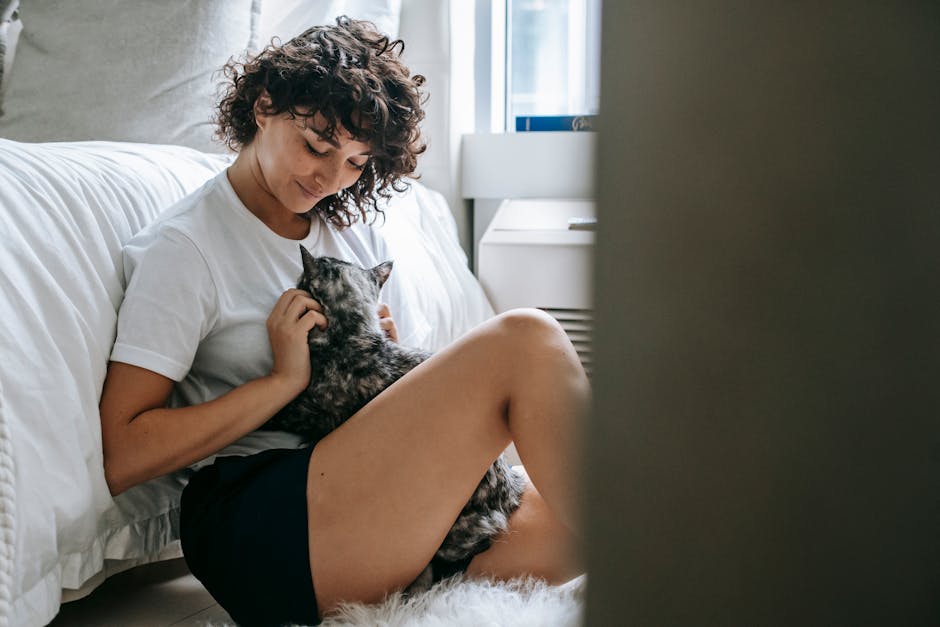
Many people are familiar with the idea of training a dog, but not as many are aware of the challenges and rewards of training a cat. While cats are known for their independence and aloofness, they are actually quite capable of learning and responding to training techniques. However, it does require a different approach and a lot of patience.
One of the main challenges of training a cat is their strong-willed nature. Unlike dogs, cats are not typically motivated by pleasing their owners. They prefer to act based on their own desires and instincts. This means that traditional obedience training methods often don't work as effectively with cats. Instead, owners must be creative and use positive reinforcement techniques to encourage desired behaviors.
Another challenge is the misconception that cats cannot be trained. Many people believe that cats are simply untrainable and that their behaviors cannot be changed. However, with the right approach and consistency, cats can learn commands, tricks, and even behaviors such as using a scratching post instead of the furniture. It is important for cat owners to have realistic expectations and understand that training a cat takes time and effort.
Despite the challenges, training a cat can be incredibly rewarding. When a cat successfully learns a new command or behavior, it is not only a testament to their intelligence but also strengthens the bond between the cat and the owner. Training provides mental stimulation for cats, helping to prevent boredom and destructive behaviors. It also allows owners to provide a safe and enriched environment for their feline companions.
Another reward of training a cat is the ability to solve behavioral issues. Many cats have certain behaviors that may cause frustration or inconvenience for their owners, such as excessive scratching or aggression towards other animals. Through training, these undesirable behaviors can be addressed and modified, leading to a happier and more harmonious household.
In conclusion, while training a cat may present its challenges, the rewards are well worth the effort. It allows cat owners to tap into their feline companions' potential and create a more fulfilling relationship. With patience, positive reinforcement, and a tailored approach, any cat owner can navigate the challenges and enjoy the rewards of training their beloved pet.
